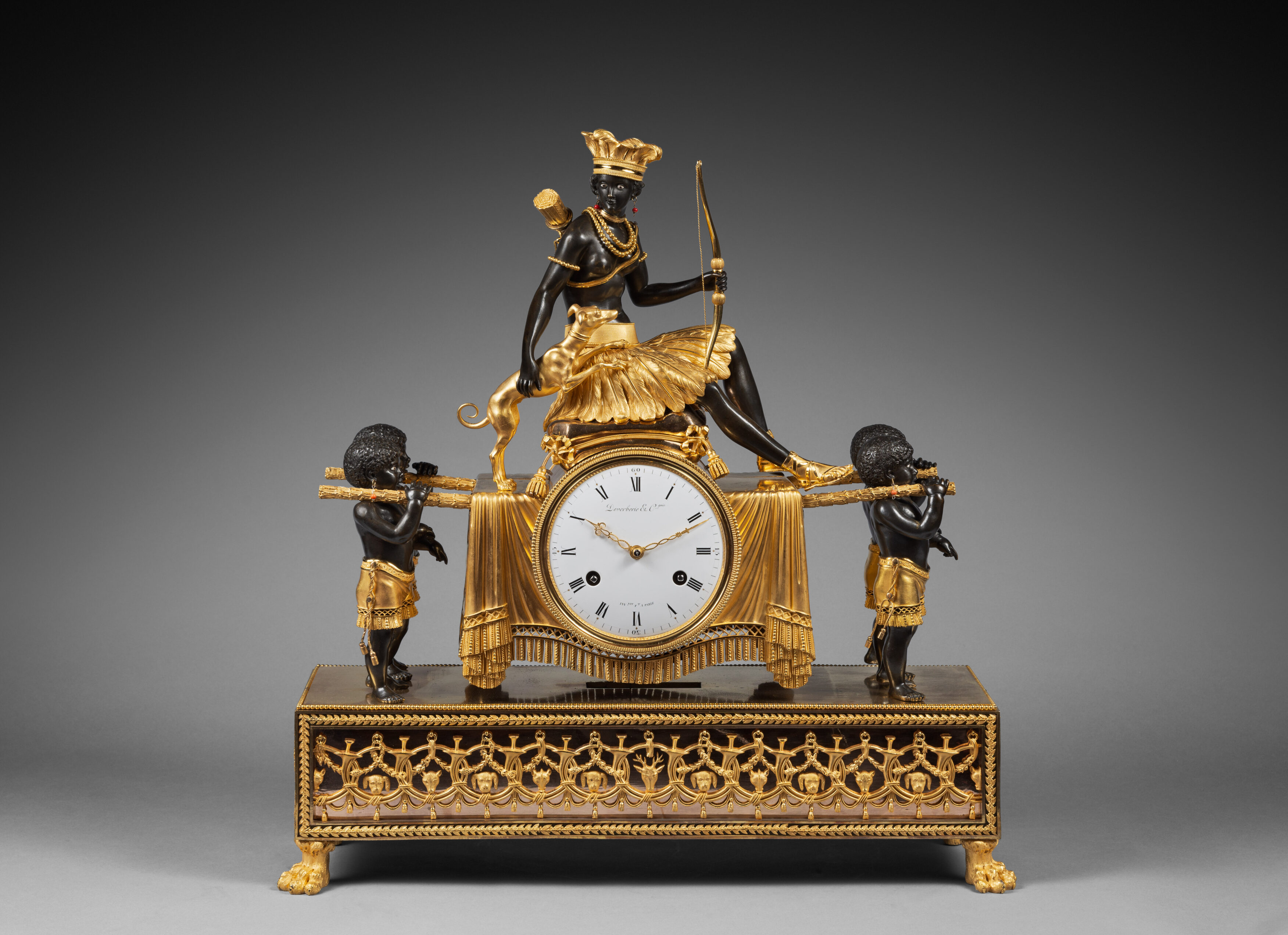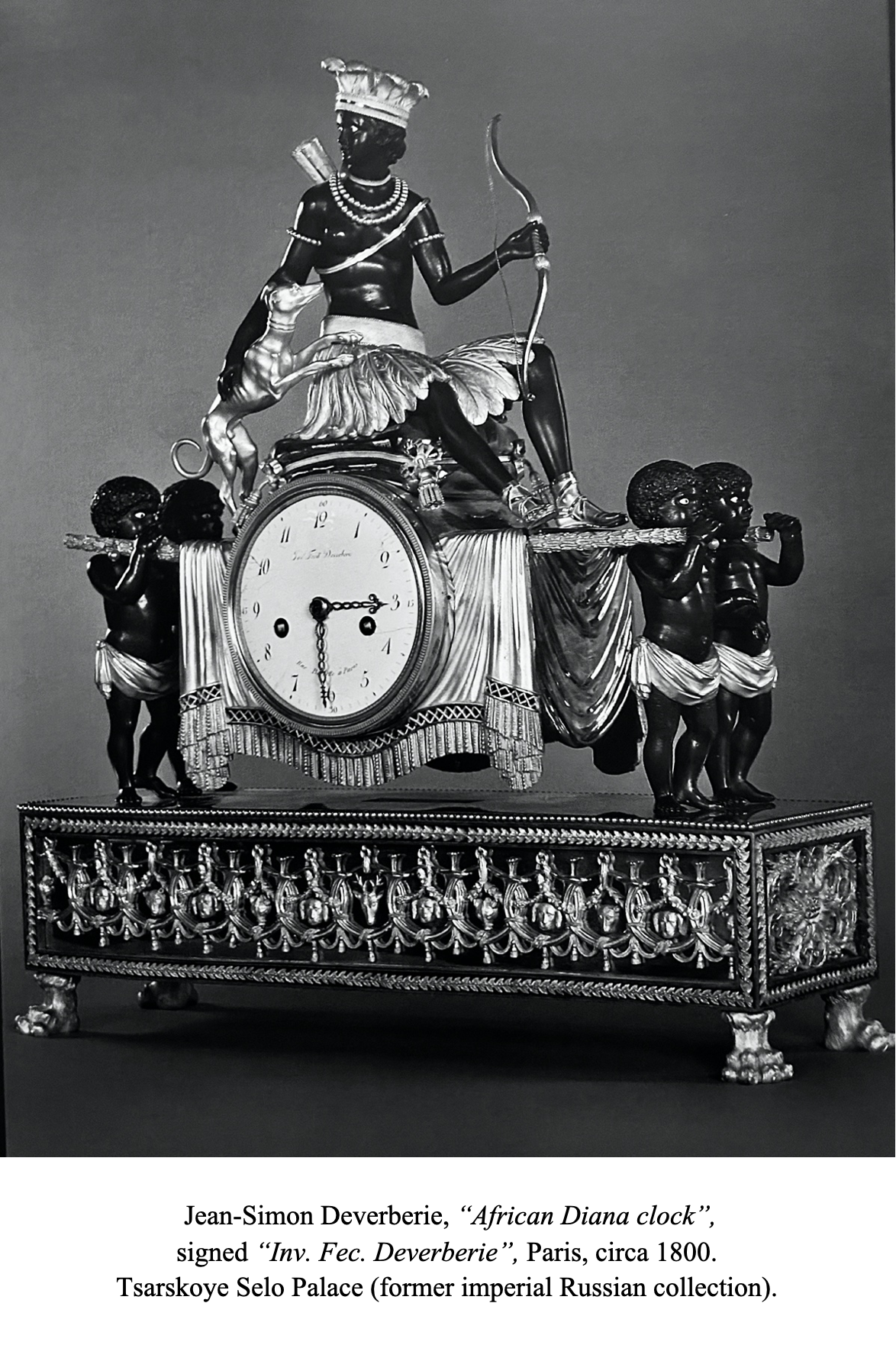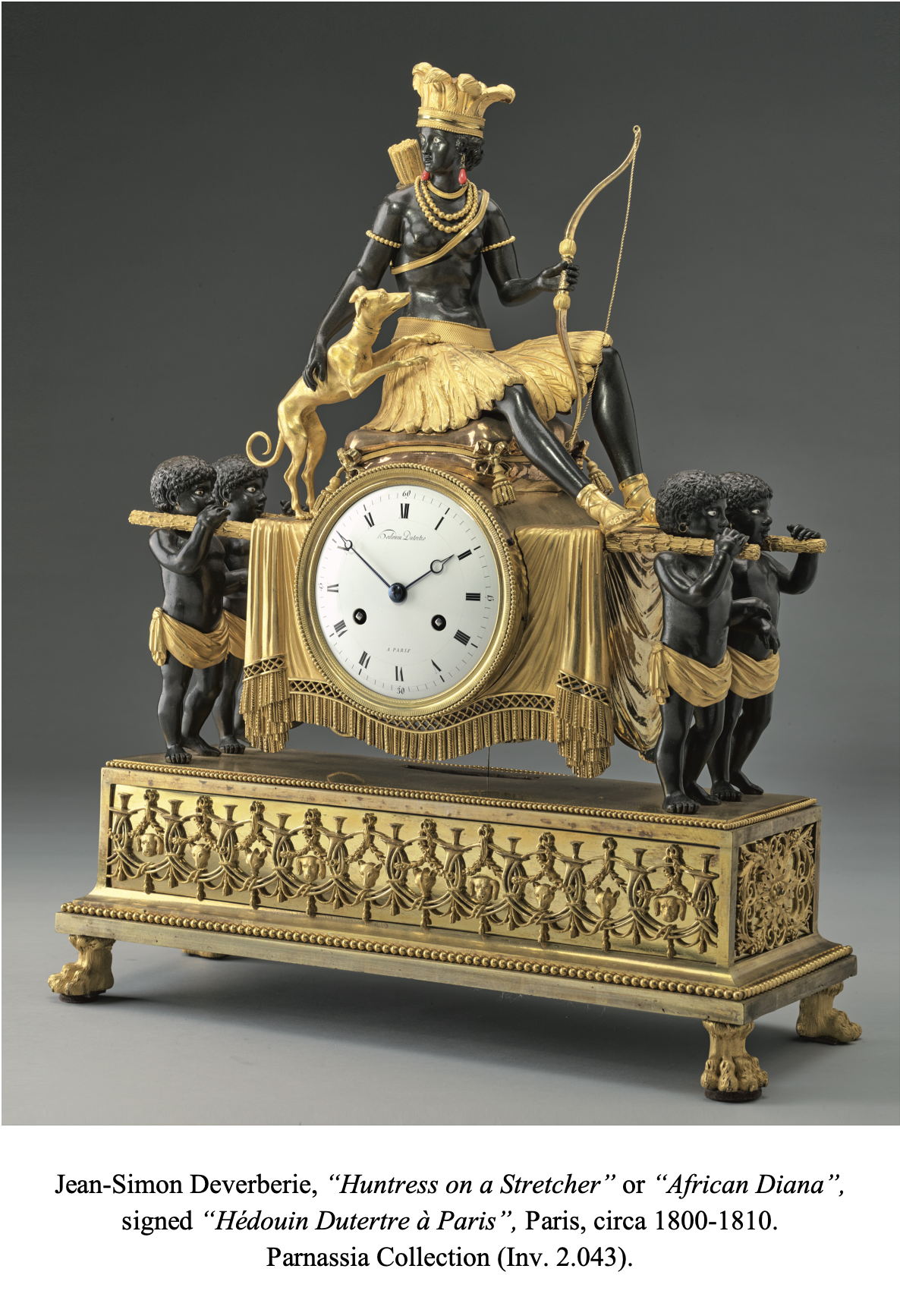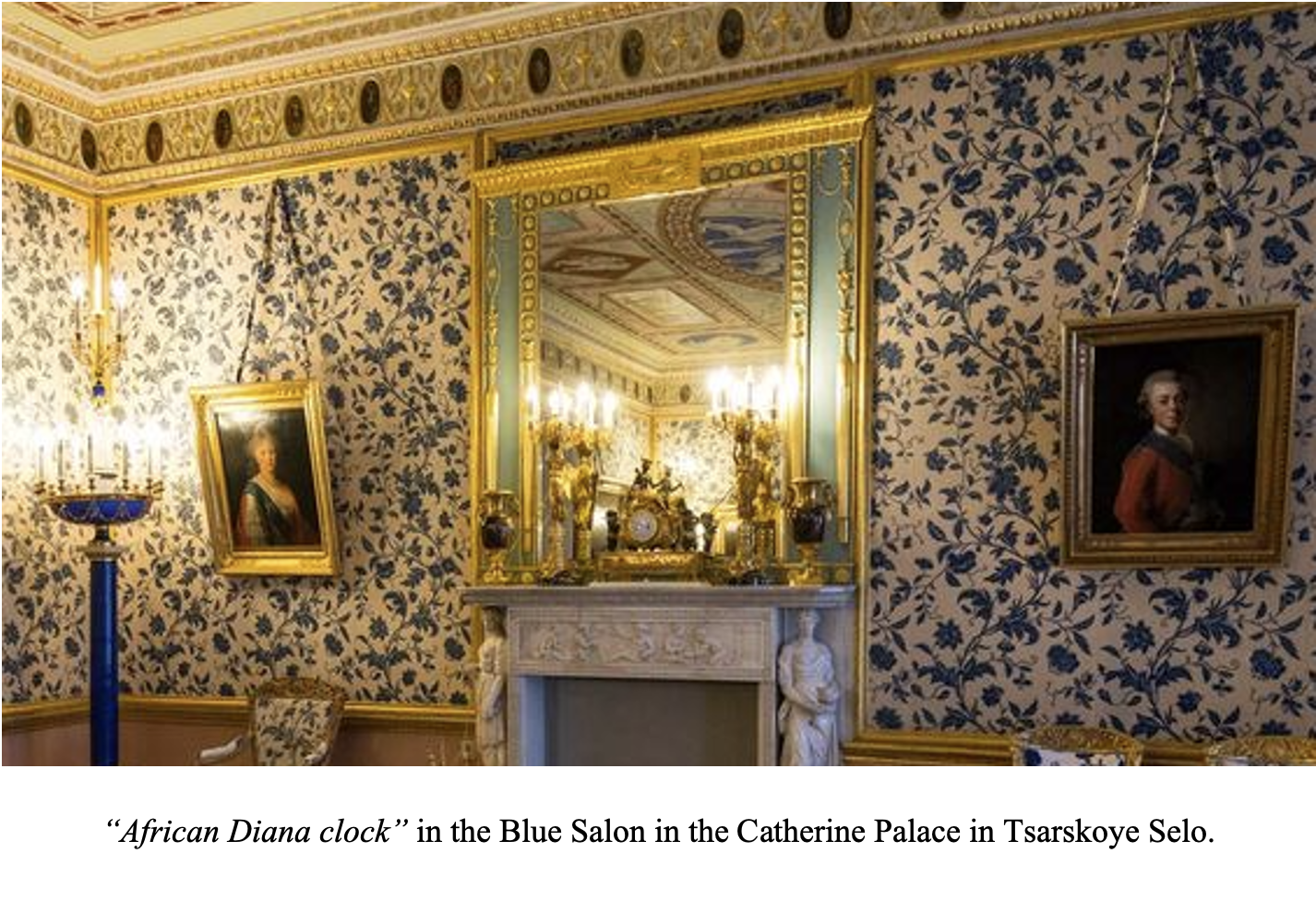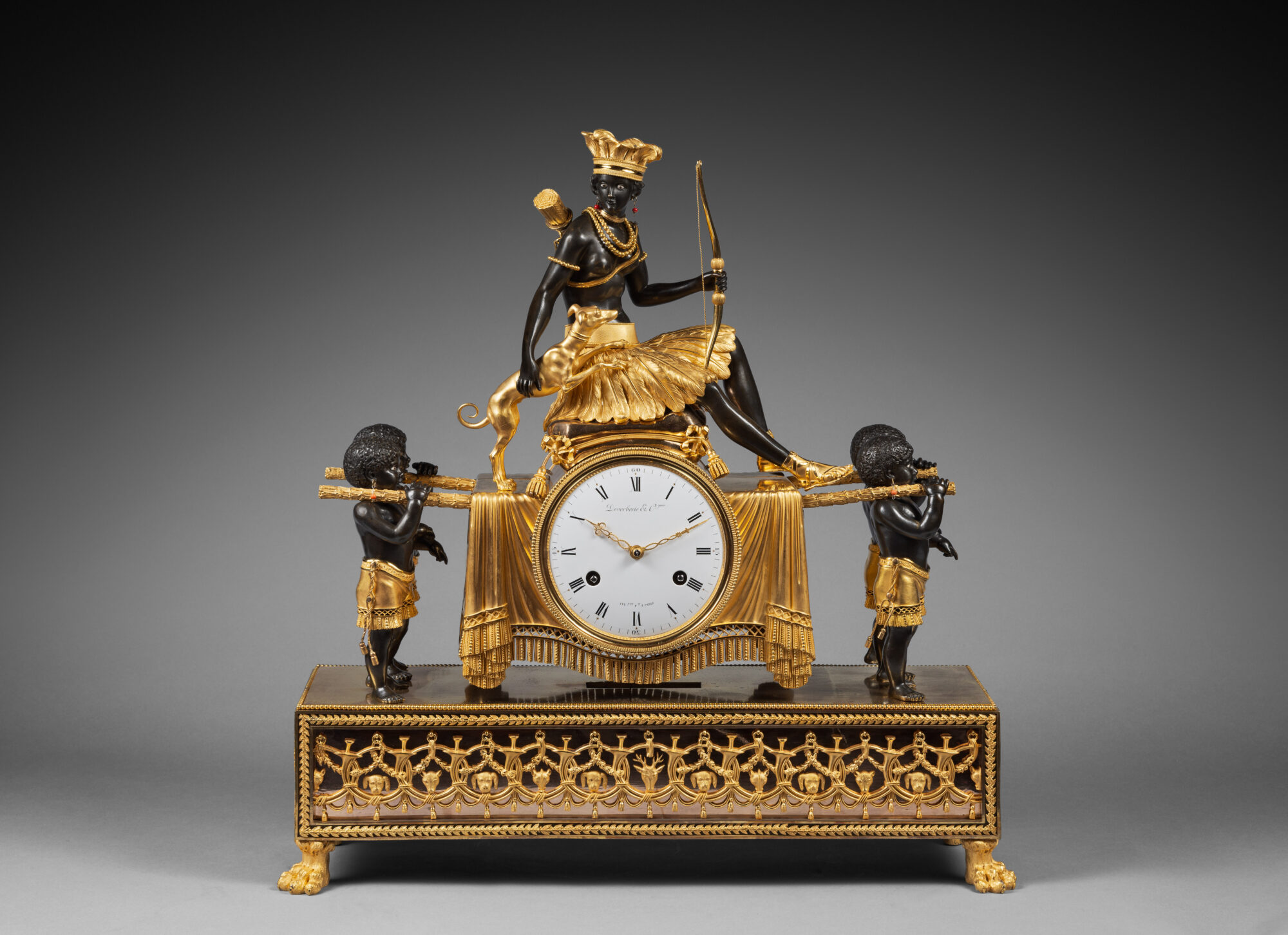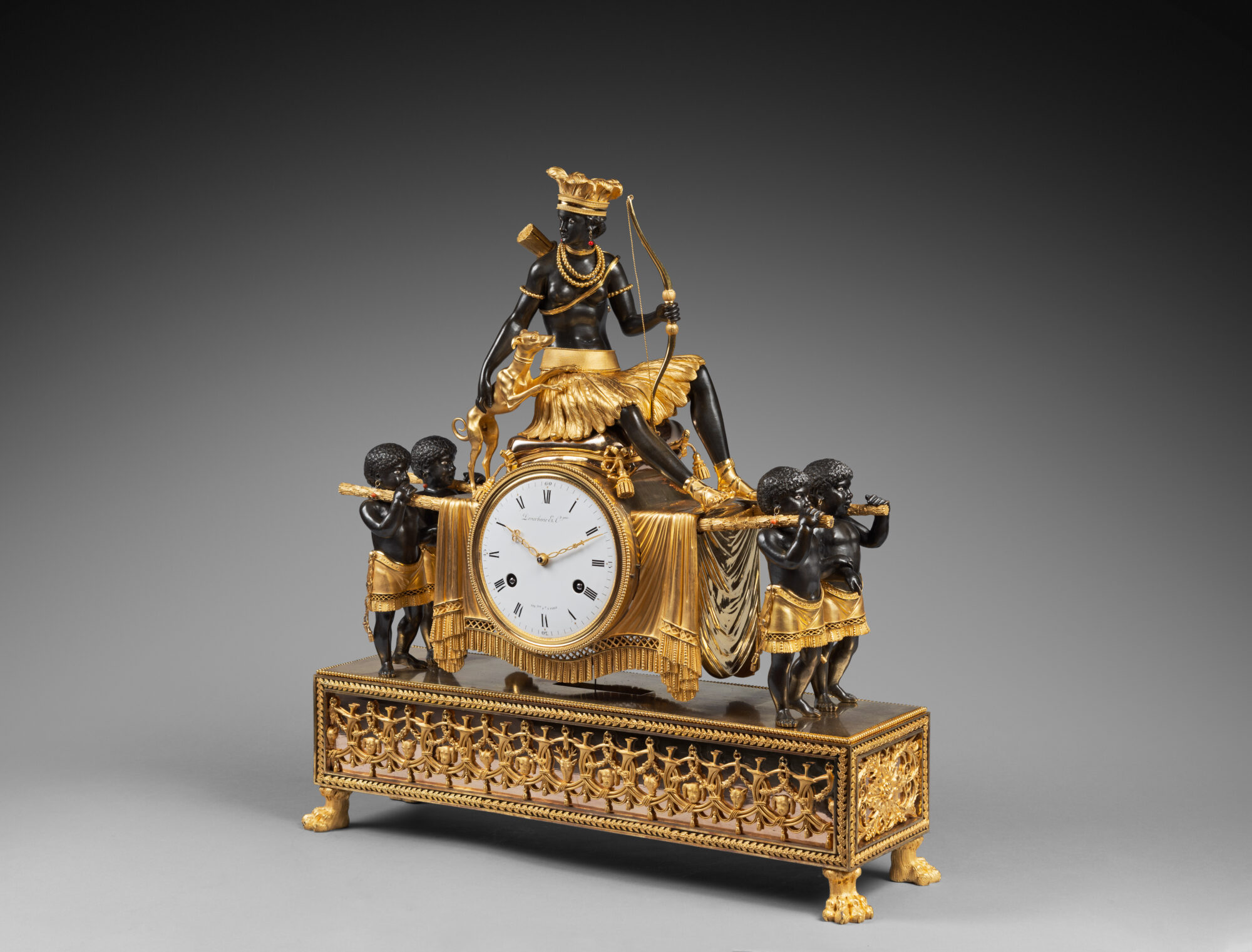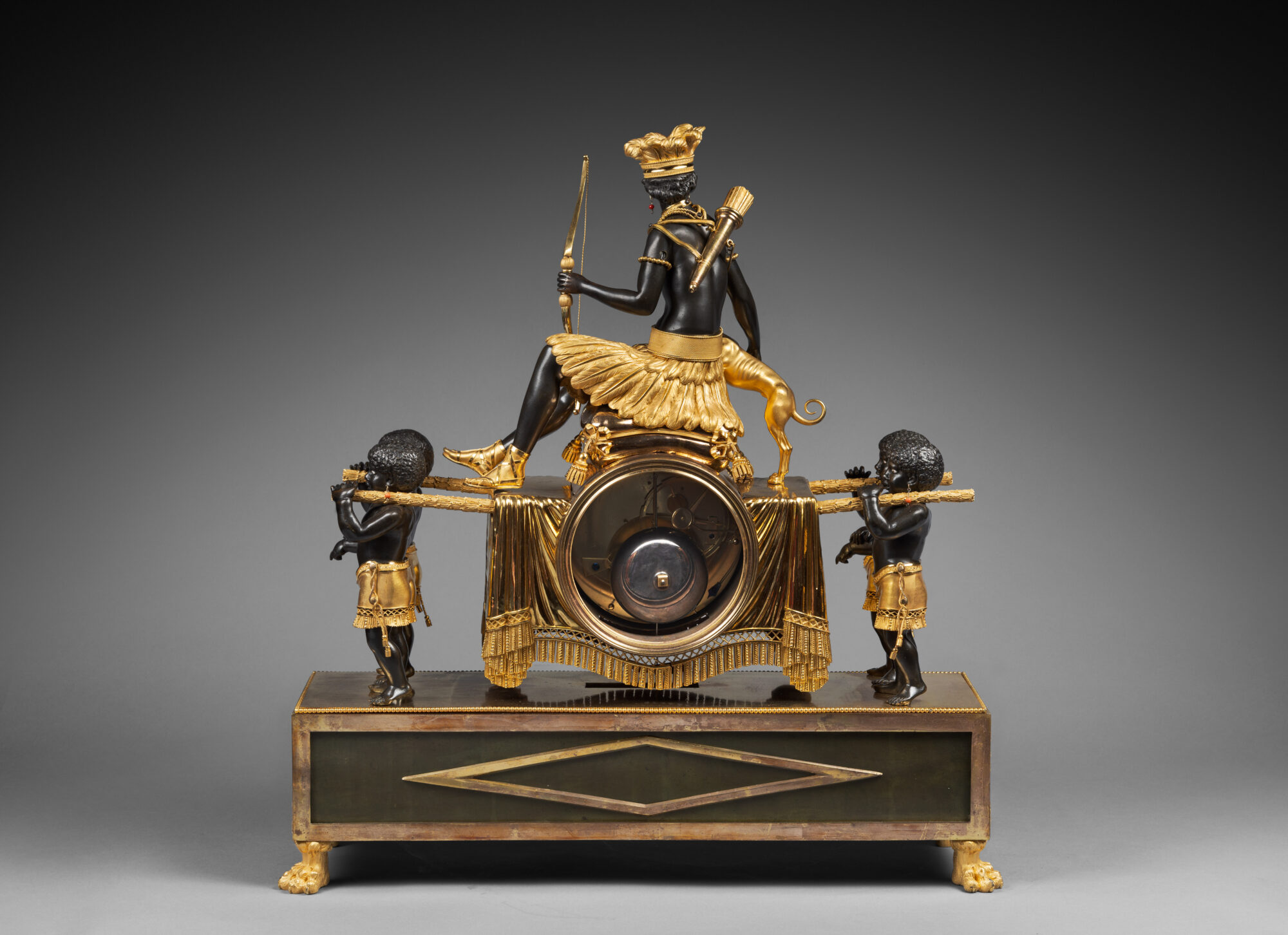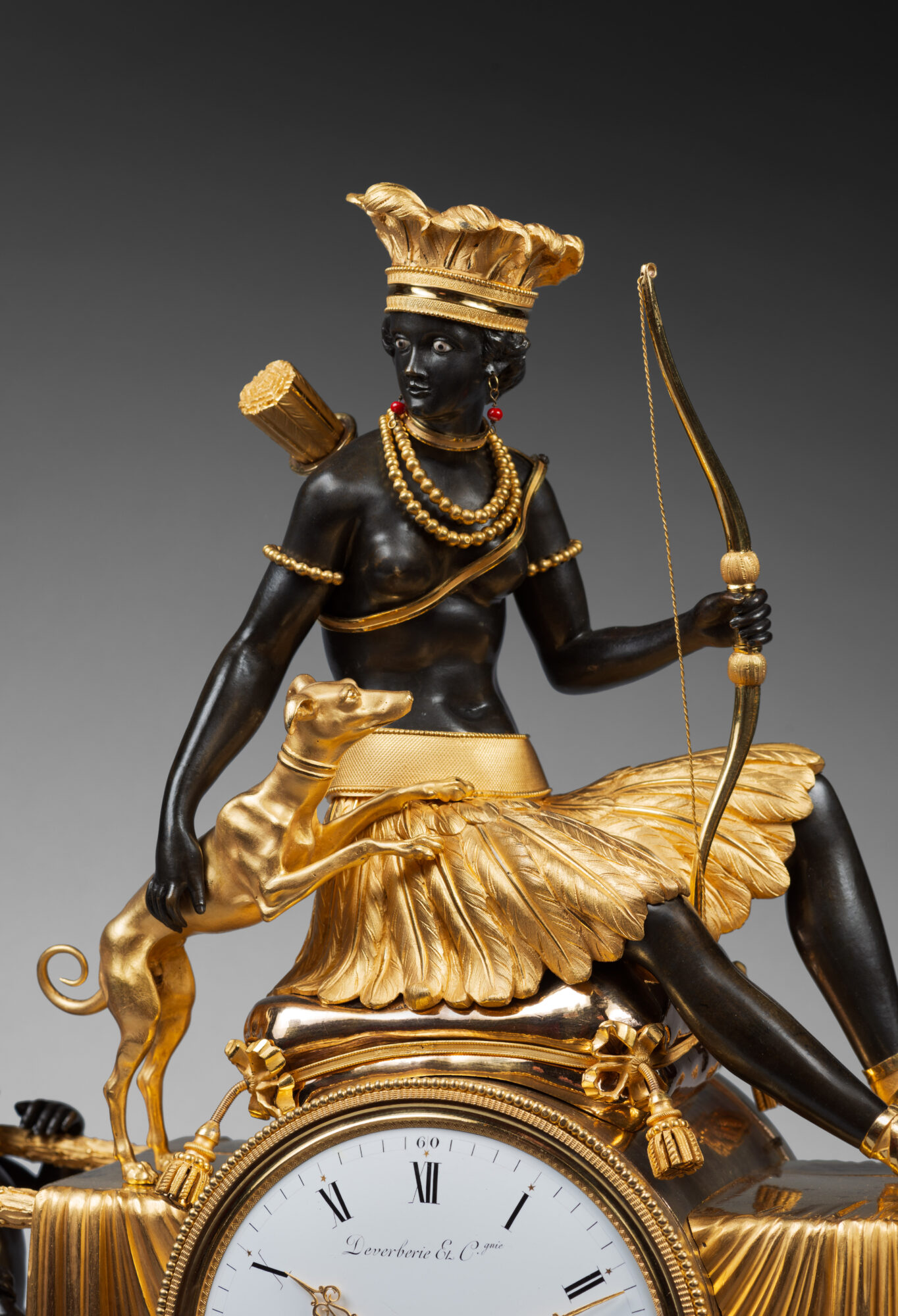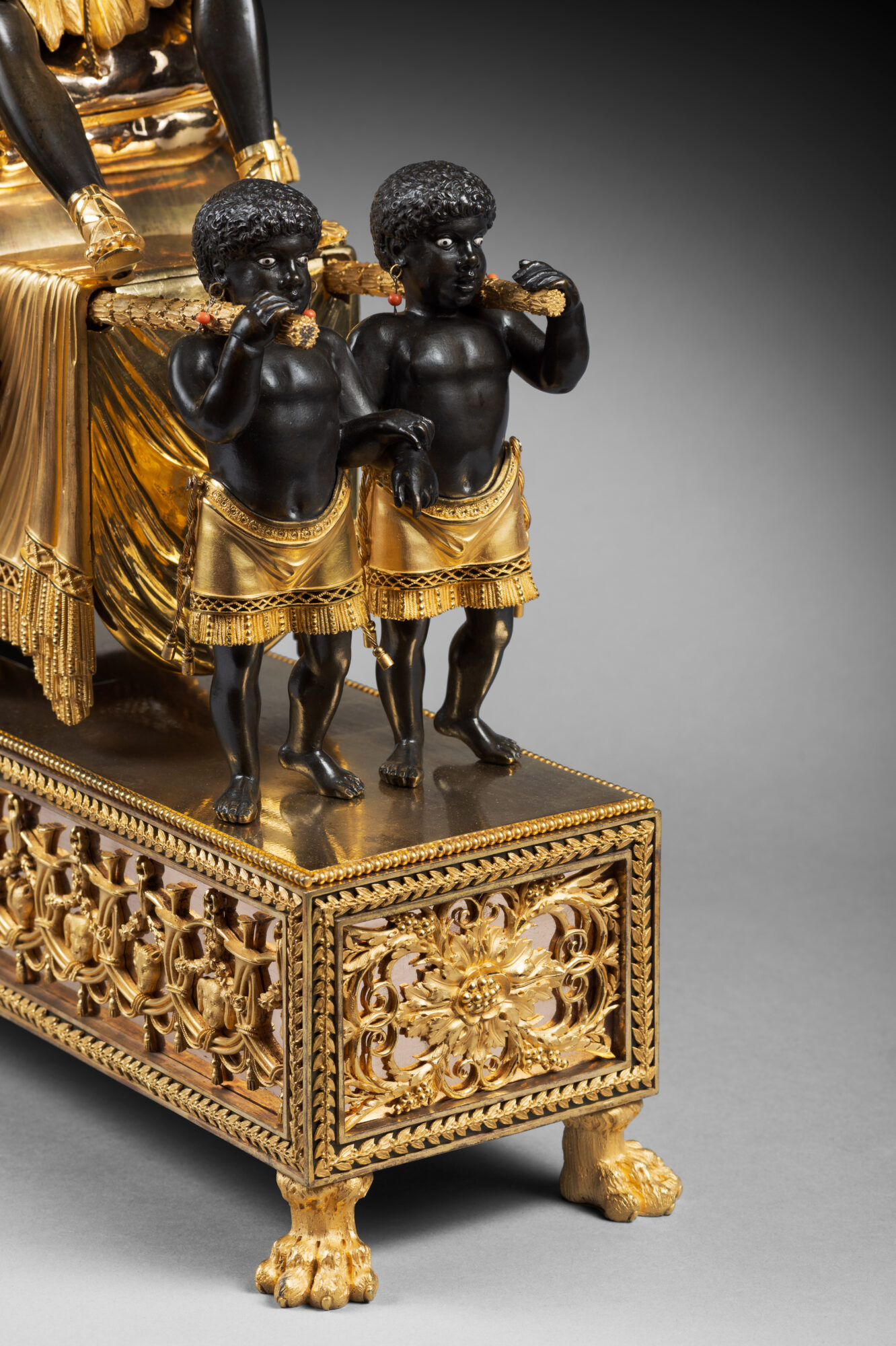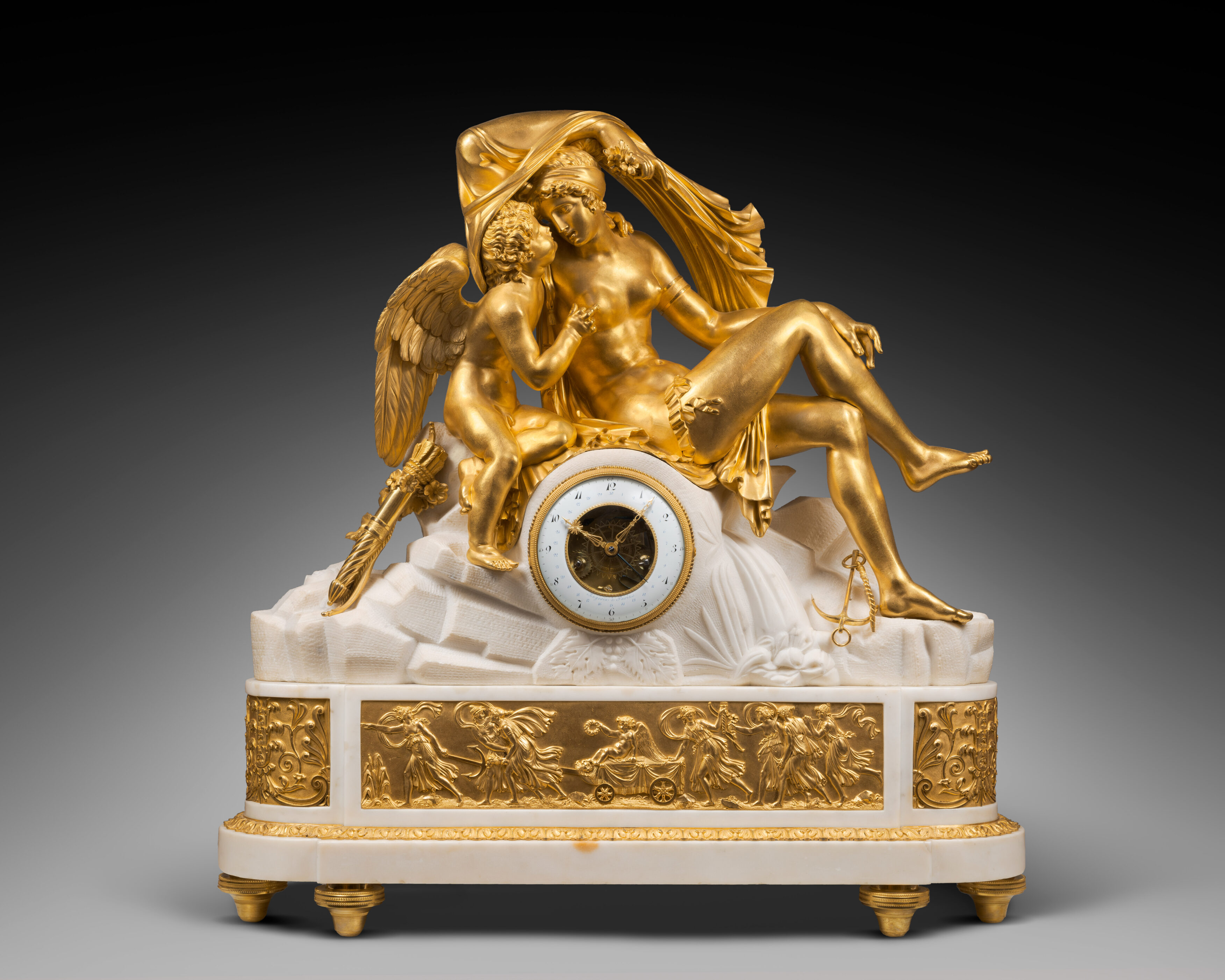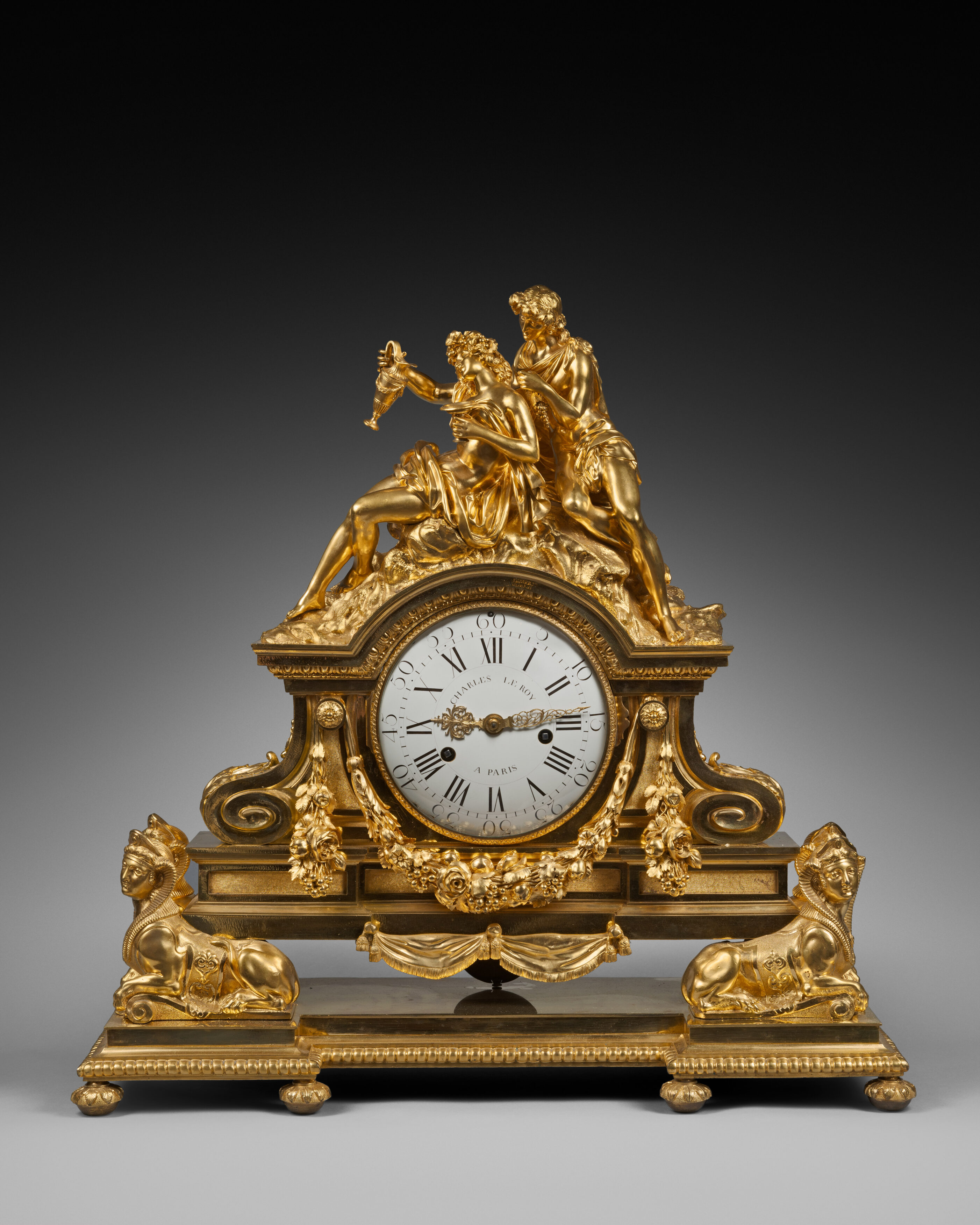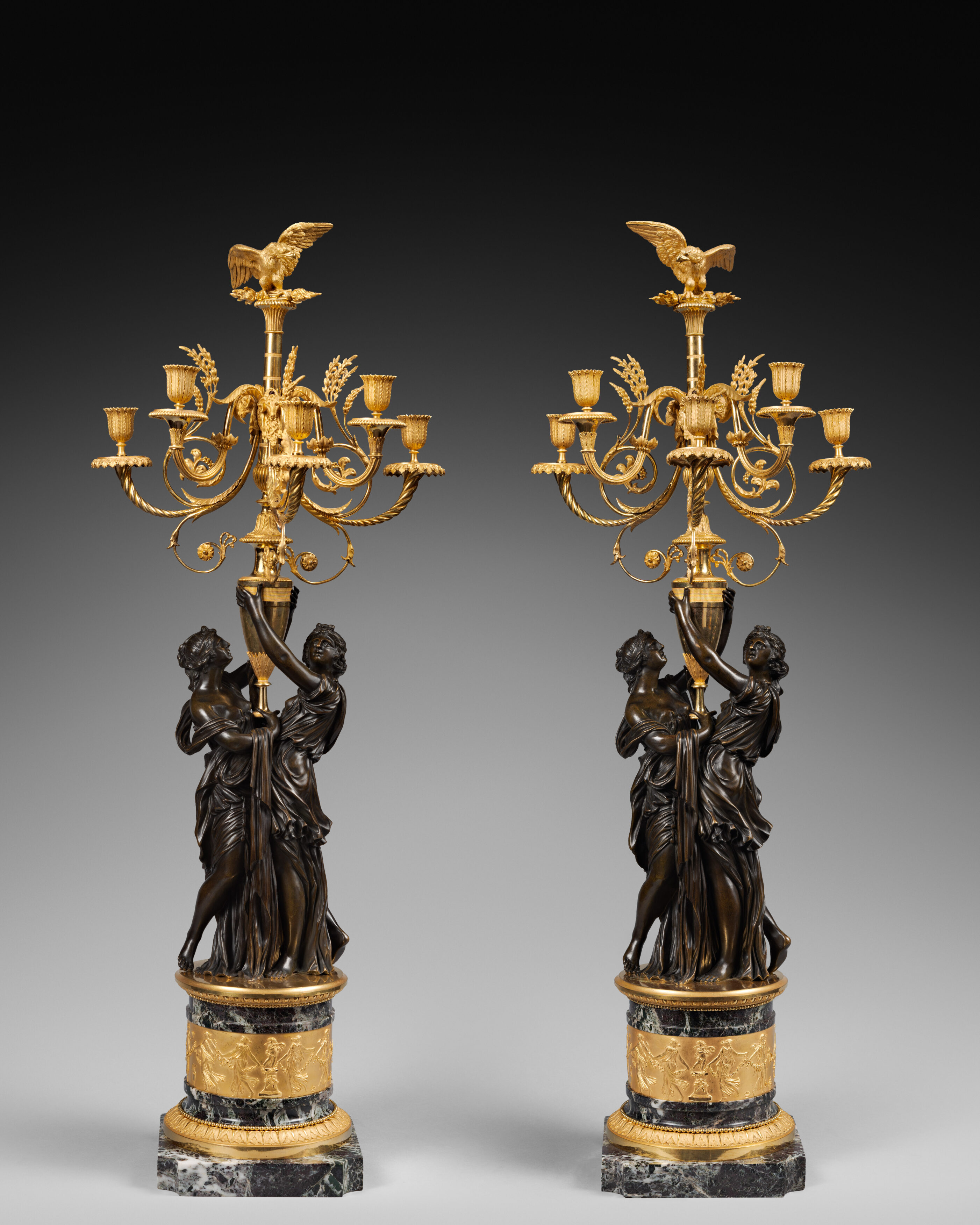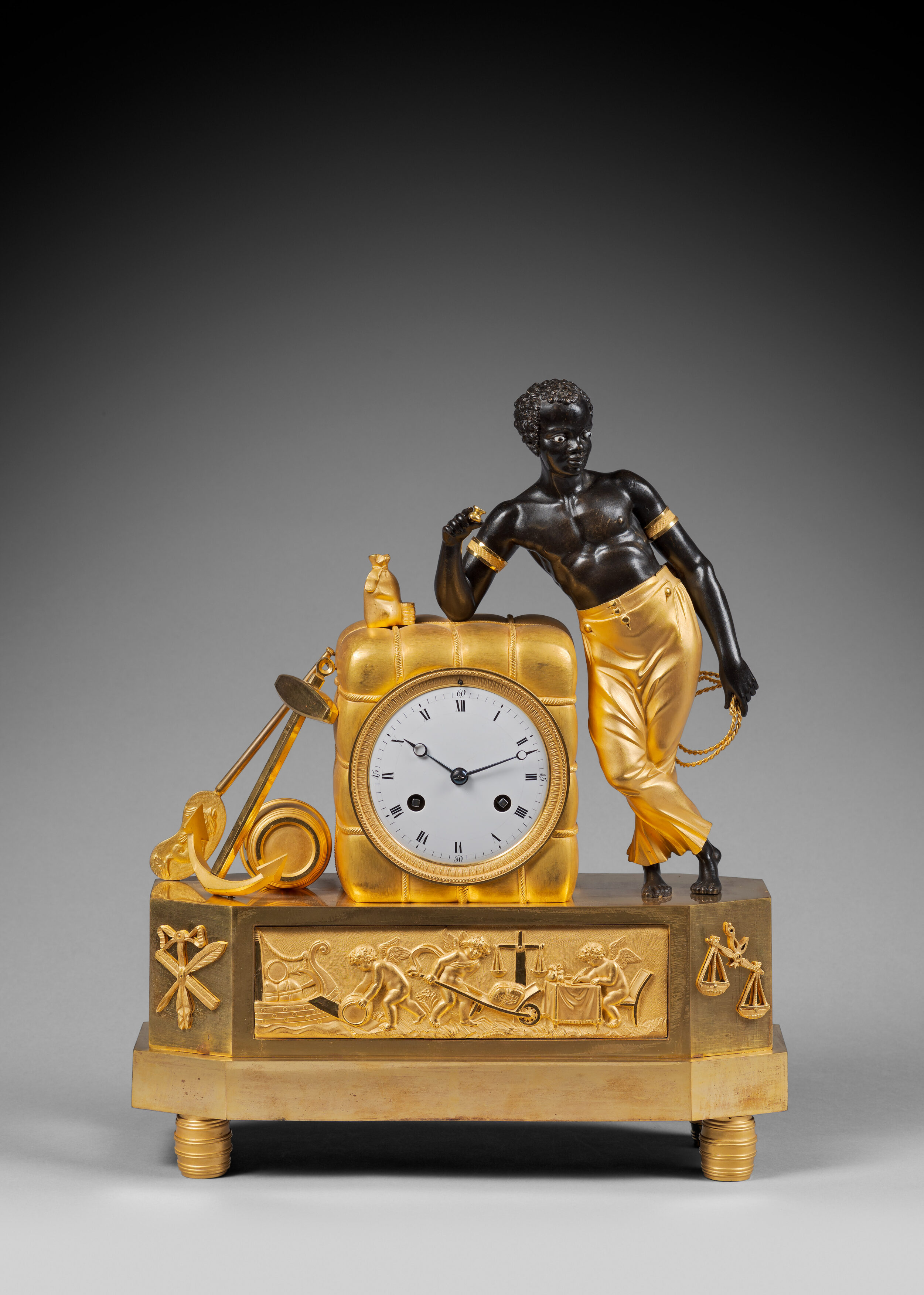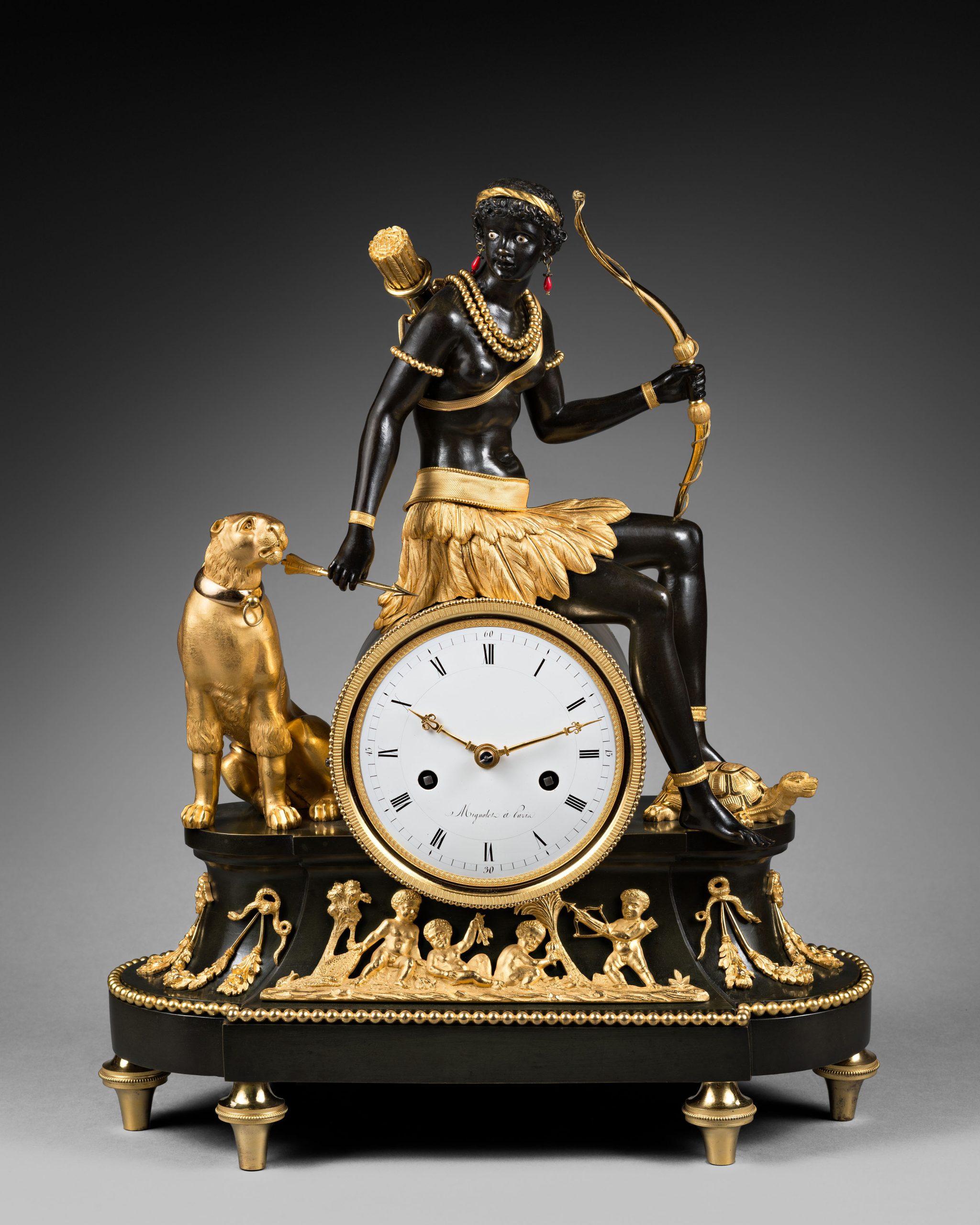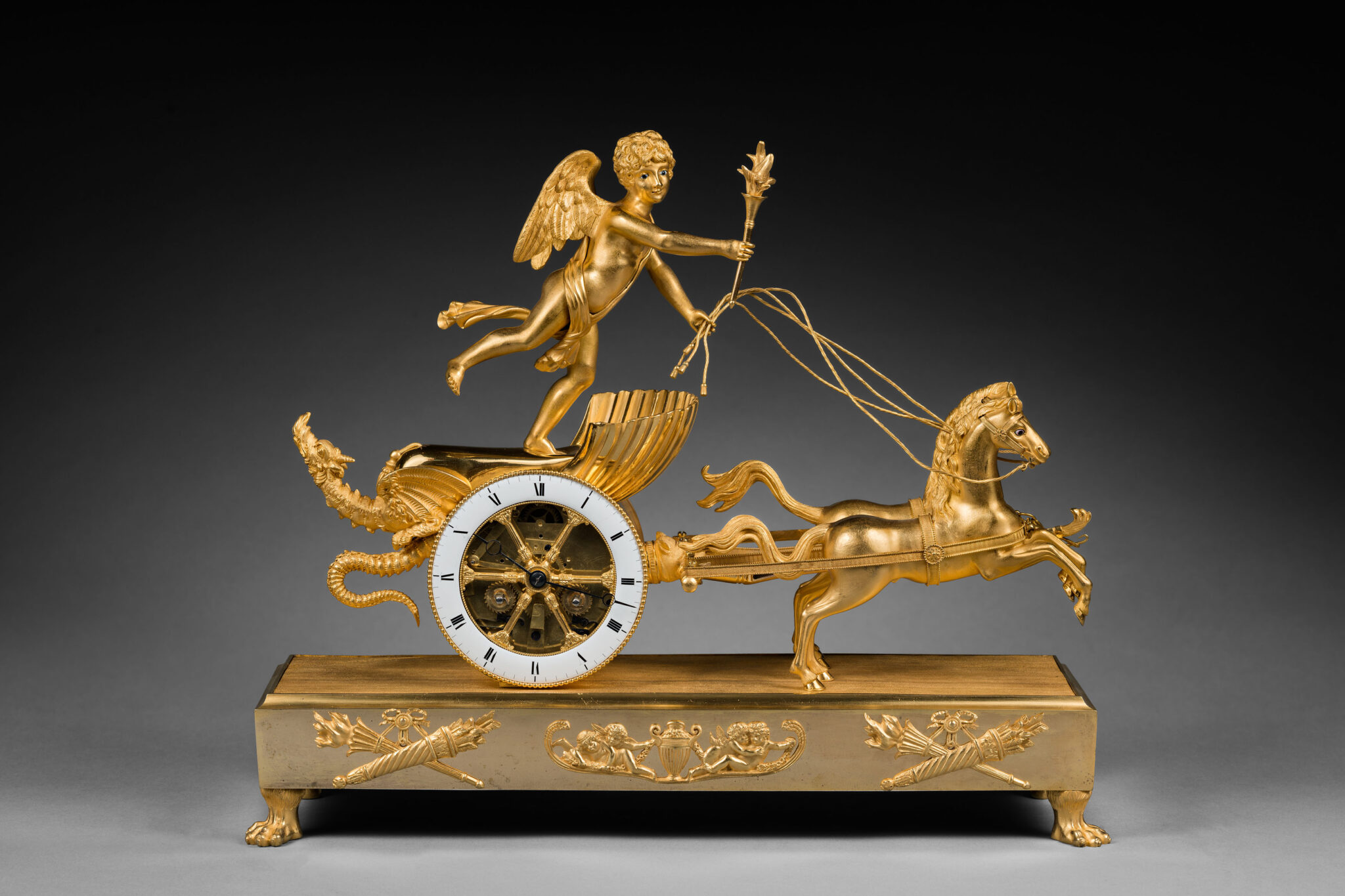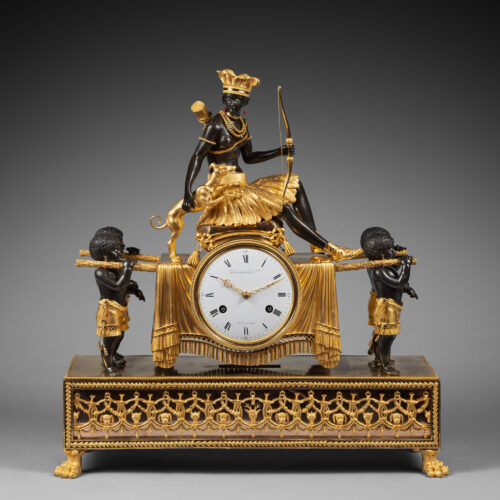Monumental Mantel Clock in Gilt and Patinated Bronze
“Huntress on a Sedan Chair” or The Carried African Diana”
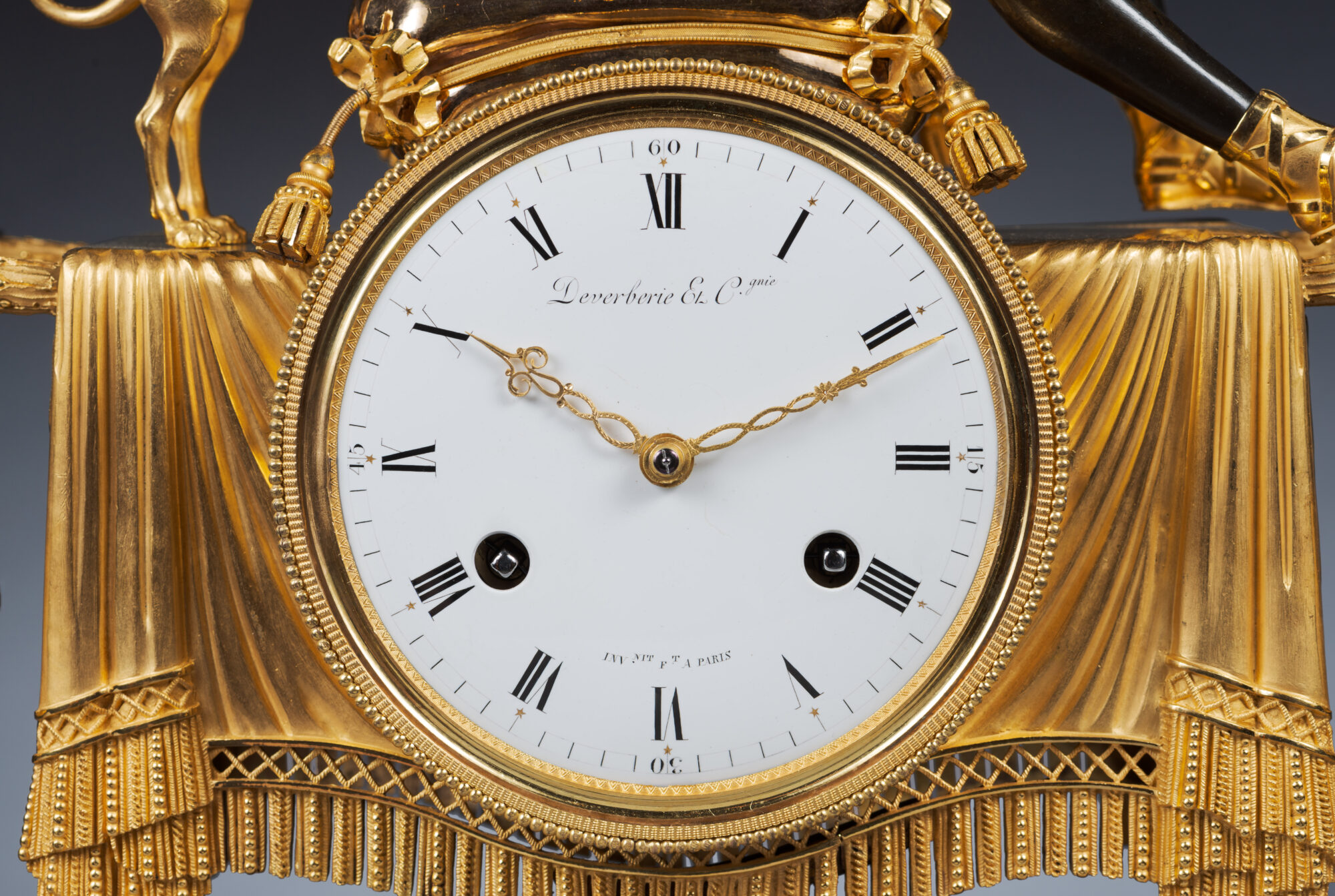
Dial signed “Deverberie & Cgnie – Inv.nit et F.t à Paris” by the workshop of Jean-Simon Deverberie (1764-1824)
Paris, Directory-Consulate period, circa 1800
Bibliography:
Dominique and Chantal Fléchon, “La pendule au nègre”, in Bulletin de l’association nationale des collectionneurs et amateurs d’horlogerie ancienne, Spring 1992, n°63, p. 27-49.
The circular white enamel dial indicates the Roman numeral hours, alternating with applied gold stars and the Arabic numeral fifteen-minute intervals by means of two pierced, chased and gilt copper hands. The dial is signed “Deverberie & Cgnie – Inv.nit et F.t à Paris” (abbreviation for “Deverberie & Compagnie Invenit et Fecit à Paris” which translates to “Deverberie & Company Invented it and Made it in Paris”). The hour and half-hour striking movement, with silk thread suspension, is housed in a finely chased gilt bronze case of patinated and matte or burnished gilt bronze. The clock is surmounted by the magnificent figure of a Nubian lady with enamel eyes, who is wearing a feather headdress, red earrings, necklaces and bracelets, as well as a feather skirt and laced sandals. Her quiver slung across her back, in her left hand she holds a bow, while with her right hand she pets a barking greyhound. The figure, an African version of Diana the Huntress, is sitting on a tasseled cushion, which rests on a sedan chair that is covered with a fringed drapery decorated with an openwork frieze and is supported by bamboo poles held by four young Nubian boys that are wearing coral earrings and loincloths with tassels and stand on a rectangular terrace decorated with a pearl frieze. The richly decorated quadrangular base features reserves depicting hunting horns and ribbon-tied leafy garlands, alternately enclosing the heads of dogs and wolves, and centered by a stag’s head. The sides are adorned with motifs of leaves, seeds, and flowers. The reserves are framed by reeds surrounded by branches of leaves and seeds. The clock stands upon four robust lions’ paw feet.
Black figures were rarely used as a decorative theme in French and European horology until the late 18th century. It was not until the end of the Ancien Régime, and more precisely, until the last decade of the 18th and the early years of the following century, that the first “pendules au nègre” appeared. They were influenced by a philosophical and literary movement expressed in several important novels, including Paul et Virginie by Bernardin de Saint-Pierre (published in 1787, it portrays the innocence of mankind), Atala by Chateaubriand, which restores the Christian ideal, and Daniel Defoe’s masterpiece, published in 1719 – Robinson Crusoe. The present clock was inspired by a successful model by Deverberie, entitled “America”. Nevertheless, in “The Carried African Diana”, the bronze caster demonstrates his ability to create original and perfectly balanced designs, with exceptionally fine chasing and gilding.
The present clock is extremely rare – to the best of our knowledge only five other “Huntress on a Sedan Chair” clocks are known. The first, whose dial is signed “Invenit et fecit Deverberie”, is today in the Musée François Duesberg in Mons. It is remarkable for its base, which depicts children fishing and hunting within a landscape of trees and palm trees, as well as for its small, flattened feet (illustrated in Musée François Duesberg, Arts décoratifs 1775-1825, Brussels, 2004, p. 58; see also the exhibition catalogue “De Noir et d’Or, Pendules ‘au bon sauvage’, Collection de M. et Mme François Duesberg”, Musées Royaux d’Art et d’Histoire, Brussels, 1993). The second, whose dial is signed “Hédouin Dutertre à Paris”, is in the Parnassia collection (see J-D. Augarde, A Journey Through Clocks, Masterworks of the Parnassia Collection, Volume II The Pendules “au noir” Editions Faton, Dijon, 2022, p. 428-429, catalogue n° 115, Inv. 2.043).
The third, whose dial is signed “Folin à Paris”, is illustrated in P. Kjellberg, Encyclopédie de la pendule française du Moyen Age à nos jours, Paris, 1997, p. 354. The fourth clock features a base with lozenge motifs; it is illustrated in Tardy, La pendule française, 2ème Partie: Du Louis XVI à nos jours, Paris, 1974, p. 356, fig. 2. One final example, whose dial is signed “Inv. Fec. Deverberie”, was acquired at the Leipzig fair for the Czar by a Saint Petersburg native; it is today in the Catherine Palace in Tsarskoye Selo and may be seen today in the Blue Salon (see Tatiana Serpinskaya, Bronzes artistiques des collections de Tsarskoïe Selo, Editions Aurora, Saint Petersburg, 2009, p. 88-89).
Jean-Simon Deverberie (1764 - 1824)
Jean-Simon Deverberie was one of the most important Parisian bronziers of the late 18th century and the early decades of the following century. Deverberie, who was married to Marie-Louise Veron, appears to have specialized at first in making clocks and candelabra that were adorned with exotic figures, and particularly African figures. Around 1800 he registered several preparatory designs for “au nègre” clocks, including the “Africa”, “America”, and “Indian Man and Woman” models (the drawings for which are today preserved in the Cabinet des Estampes in the Bibliothèque nationale in Paris). He opened a workshop in the rue Barbette around 1800, in the rue du Temple around 1804, and in the rue des Fossés du Temple between 1812 and 1820.
